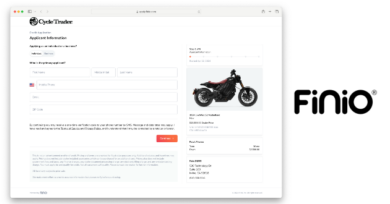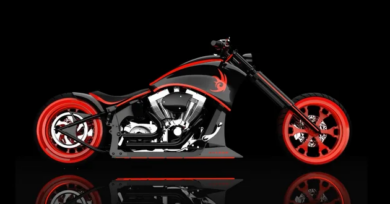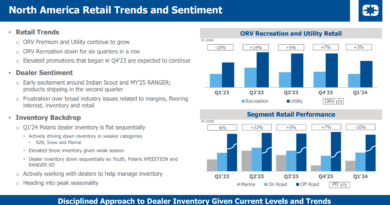Nov. 10, 2008 – Growing in their niche areas
While off-road new unit sales have slowed during the past couple years, several companies have pursued niche opportunities within the marketplace. Here is a look at some of those companies and what business steps they’ve taken to become entrenched in their niche areas.
Christini AWD
In the past 12 months, Steve Christini has seen public perception of Christini AWD and the all-wheel drive motorcycle concept he has championed for years turn the corner.
“It’s gone from being a gadget to an accepted aftermarket accessory,” he said.
Looking at message boards a year ago, Christini saw a lot of skepticism about the product, with an occasional Web poster who thought two-wheel drive sounded cool. Now when he sees Christini AWD listed among a bike’s features online, it is without any special comment — the same as upgrades that have been around for years.
During the past year, Christini added a KTM kit for two- and four-stroke bikes to go along with the Honda 250 and 450 kits that launched in 2007. Since their introduction, the KTM kits have come to make up about three-fourths of Christini’s sales.
Christini has significantly lowered the price of its kits since the original came out with a $6,800 price point. Today, the Honda kits retail for $3,995 and the KTM kit is $4,595. This is possible in part because of increased volume, Steve Christini said, but the company also felt it needed to go lower to hit the market’s “sweet spot” and eliminate the mental barrier that came with doubling the purchase price of a bike.
Christini doesn’t have a large dealer network. Instead, most sales are initiated by the customer, with Christini happy to sell direct or work with the dealership of the customer’s choice.
Christini thinks revenues have been affected by the poor economy and down off-road market, but he has yet to fully see what the effect will be. He estimates 20-25 percent of sales are coming from overseas, and he is unsure how fluctuations in the Euro will impact those numbers. Overall, he says, sales are still growing (and he notes it hasn’t been a year since the company sold its first KTM kit), but they are still not where the company would like to be.
A long-term goal for the company is still to partner with a large OEM, and with luck Christini says the company might have a relationship in place in the next two years. For now, however, the company’s small staff is scrambling to keep up with demand as an aftermarket add-on.
— Mike Davin
Wheels-4-Tots
For a decade, Wheels-4-Tots has been offering training wheels for a variety of 50cc motorcycles. President Jeff Martin says during that time, he has kept the goals of his kid-oriented business simple, choosing to focus on safety and fun.
“We’ve learned that if you hurt or scare a child on a motorcycle, it takes a long time to get over,” Martin said.
On the contrary, if you properly introduce a child to the sport, they are tied in, Martin says, and will be loyal for years.
The company’s original product, the E-Z Trainer, is a model-specific set of training wheels designed for a variety of smaller bikes, including mini-motorcycles from Honda, Suzuki, Yamaha, KTM and Kawasaki, among others. The E-Z Trainer retails for $159.99, and Martin notes the price hasn’t risen in four years.
A newer product, introduced in the past two years, is the company’s Universal Trainer, which can be installed on a variety of bikes and sells for $129.99. Martin says there are advantages to both products — the E-Z Trainer is faster to install and slightly more rugged, while the Universal Trainer is easier to resell and offers the flexibility of being able to switch between bikes if your family owns more than one.
The main distributor for Wheels-4-Tots is Tucker Rocky, and Martin says he has been happy with the relationship, which has lasted almost four years. The Universal Trainer is also distributed by Marshall Distribution. Wheels-4-Tots has an online store as well, although Martin says that is not the primary source of sales.
Martin thinks the fluctuating cost of gas affected customers, although with prices dropping, there doesn’t seem to be any lasting effect. Sales slowed during the summer, but Martin notes that is typical for the product and things are already picking up for the end of the year.
Martin says Wheels-4-Tots is advertised mainly through word of mouth and the efforts of its distributors. The company cut back on advertising because it felt its ads were raising awareness of the competition as much they were helping Wheels-4-Tots, although they still run some ads around Christmas and their dealer show.
Wheels-4-Tots was designed to allow families to participate in motorcycling as a group. To that end, Martin has also written a book, “A Parent’s Guide to My First Motorcycle,” and he has other educational media in the works.
— Mike Davin
Predator
A California-based company is marketing a different type of two-seater quad that is far and away different than a typical UTV.
The vehicle, the X-18 Intimidator, offers a short wheel base (103 inches) with a 170hp Chevrolet engine and a dune buggy-like appearance. The vehicle, however, is different than most dune buggies found in the West, many of which have 6- or 8-cylinder engines, and “drives like a two-seater quad,” said Eamon McDonald, president of Predator Motor Corp.
The corporation is headquartered in California but has a factory in China, about two hours outside of Shanghai. That’s where the vehicle’s chassis is built. The vehicle’s final assembly, which includes adding the Chevrolet engine, clutches, shocks, tires and wheels, occurs in California.
McDonald’s partner and three U.S. engineers oversee the production in China. The corporation has been around for three years and is just now starting to actively recruit dealers.
McDonald says the company did quite a bit of testing before approaching dealers.
“The idea is to do it right,” he said of ensuring the quality of the product, “and that’s where I feel we are today.”
McDonald, who previously had a large circuit board business, says Predator Motor Corp. has product liability insurance ($5 million per vehicle) and has CARB and EPA approval on the X-18. Both CARB and the EPA list the X-18 Intimidator (MSRP $27,995) as a quad.
Predator will sell its off-road vehicle solely through dealers, with the overwhelming majority of them being powersports dealers.
McDonald says the company currently has the capability to build 18 per month and could move to 100 per month by year’s end.
— Neil Pascale
TrailPass
After five years spent creating and expanding its network of off-road trails, TrailPass is still going full-steam ahead, according to Director of Operations Lee Ann Harris. The company has recently added trails, lowered the price of its passes and started to add motocross tracks. Not only that, Harris says riders are becoming more comfortable with the brand now that it has been out there for a while.
“People are starting to come to us instead of the other way around,” Harris said.
Purchasing a pass from TrailPass gives riders access to the TrailPass network and additional benefits, such as discounts at events and for-profit parks. For clubs and parks that sign up with TrailPass, the company offers insurance, marketing and professional assistance in areas including trail mapping and coordinating with local law enforcement.
TrailPass currently provides riders access to trails in the Northeast, Midwest and South, and the company is always looking to add new trails. Its most recent additions include two parks in Virginia and one in Pennsylvania.
The cost of purchasing TrailPass at a dealership has dropped from $75 to $50. The cost is $10 higher for customers who buy online, which Harris says is to encourage customers to go into their dealer to pick up the pass.
Thanks to a change in its insurance policy, TrailPass is now able to cover motocross practice tracks, as long as the track is being used for open riding and not competitive racing.
Another big change is that previously clubs had to share their paths to be part of the program. Now they can keep them private and still take advantage of the TrailPass management and insurance package.
Like the rest of the off-road market, TrailPass felt the effects of sky-high gas prices this summer, but Harris says the company has received a big boost as gas prices have retreated. The cost of gas and the state of the economy also have caused people to look for trails closer to home, according to Harris. One benefit of that, she says, is the enthusiasm she has seen from people who want to develop new, more conveniently located trails.
Harris says the company continues to evolve to meet the needs of its riders and communities. She noted, “If you haven’t taken a look at us since we started, check us out again because we’ve changed.”
— Mike Davin




